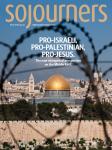I WALKED THROUGH the halls of the Rosa Parks Museum in Montgomery, Ala.—slowly. Original documents lined the walls of the nation’s central memorial to the local actions that helped trigger the national mass movement for civil rights. To skim would have been a sacrilege. Each document was evidence. Evidence of struggle. Evidence that America’s apartheid happened. Evidence of a miracle.
The museum is like a labyrinth. Each room builds on the last, adding color and depth to a reality most of the nation has only experienced in the two-dimensional contours of sepia-toned documentary footage and pictures.
I entered the room with the kitchen table where Martin Luther King Jr. dropped to his knees and prayed, weeping, scared, and still holding onto the last vestiges of his personal dream for a middle-class preacher’s life. For my tour group, the room was about that table, but the documents lining the walls like wallpaper caught my eye.
One stood out. It was a full-page newspaper ad with a letter from the White Citizens’ Council of Montgomery to the blacks of Montgomery. The letter pleaded with the black citizens to “stop their violent attack on their city.”
The first time I read “Stop this violence,” I was befuddled. What violence?
I scanned my memory for any trace of violence in the Montgomery bus boycott by the blacks who engaged in economic protest, refusing a public service that proclaimed and enforced a spiritual lie: Blacks are less than human. They had dropped one too many coins into the slot only to have to give up their seat to a white person if the bus was too full. The blacks of Montgomery refused to comply any longer with their society’s sin. They couldn’t continue taking up the public shovel to heap another pile of dirt on the carcass of their deadened dignity. So they walked.
And weeks into walking, the White Citizens’ Council called their protest “violent.”
How could not riding a bus be considered violent? Especially when black people were being lynched, tortured, and terrorized throughout the South.
Then it hit me, as if someone had knocked the legs out from under me. I dropped to my knees in front of King’s table. I got it! The boycott was “violent” because it nearly put the Montgomery bus company out of business. What constituted “violence” to the White Citizens’ Council was an attack on their bank accounts—loss of money, not life.
My time in Montgomery has been haunting me lately. It started last August when police opened fire on protesters in Ferguson, Mo., with rubber and wooden bullets. It continued as the body count began to mount around St. Louis: four boys shot dead by police in four months. It weighed heavy on my soul as the annual numbers of police, security, and vigilante killings began to be revealed: In 2013, there were 313 extrajudicial killings of black men, women, and children, according to “Operation Ghetto Storm,” a report by the Malcolm X Grassroots Movement. One every 28 hours. In fact, black people were victims of twice as many extrajudicial killings than they were in 1892, the deadliest year of Jim Crow lynching.
And yet many are calling today’s protesters “violent” because they yell, they look angry, and they don’t play by the rules. What constitutes violence? In one sense violence is anything that tears down, destroys, or disrupts the well-being of anything. Theologically, though, is it “violence” to use nonviolent means to tear down, destroy, or disrupt systems that oppress and suppress the image of God on earth?
Perhaps this is what Jesus meant when he said, “The kingdom of heaven has suffered violence, and the violent take it by force” (Matthew 11:12).
Perhaps the kingdom of heaven had suffered violence through the Roman Empire’s oppression of the image of God on earth. And perhaps here Jesus is calling his followers to disrupt the violent suppression of God’s image through means that are nonviolent—but forceful. But we must know we risk being called “violent” by the world—the world that violently protects and worships the Caesar on coins, rather than worshiping God and forcefully protecting God’s image in people.

Got something to say about what you're reading? We value your feedback!
